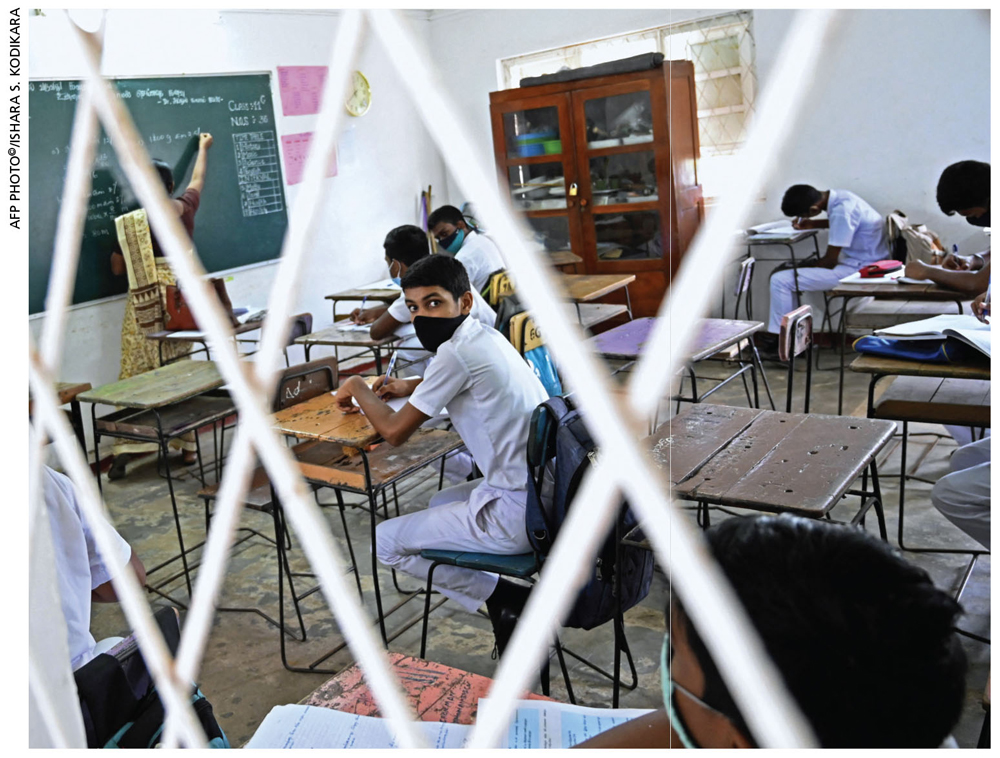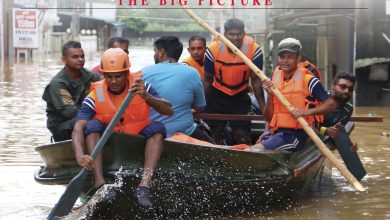CRAWLING BACK FROM THE ABYSS
Fazmina Imamudeen stresses the need to reform Sri Lanka’s education system

Classrooms designed to accommodate 25 students bear the weight of 45 these days, their desks and chairs jammed together in a claustrophobic maze. This stark image is mirrored across countless schools and epitomises the failure of Sri Lanka’s education system, which is teetering on the edge of collapse.
The economic crisis that engulfed Sri Lanka left its education sector reeling, its once proud pillars now crumbling under the weight of austerity measures. Teacher shortages have become endemic with schools struggling to attract and retain qualified educators, due to meagre salaries and abysmal working conditions.
This dearth of skilled professionals has led to bloated class sizes, undermined the quality of instruction and hindered students’ ability to receive individualised attention.
The infrastructure of Sri Lanka’s education system is equally dilapidated, buckling under the strain of chronic underfunding. Schools are plagued by a scarcity of basic resources, lacking even the most essential tools for learning.
Textbooks and stationery are scarce, libraries are devoid of up-to-date educational material and technology remains woefully outdated, leaving students disconnected from the digital world.
These challenges have had a profound and disproportionate impact on Sri Lankan children, particularly those from marginalised communities. Students from impoverished families are more likely to drop out of school or attend substandard institutions while their dreams of a brighter future fade amid the harsh realities of their circumstances.
The lack of access to quality education is perpetuating cycles of poverty, limiting opportunities and jeopardising the future of an entire generation.
A consequence of the economic crisis is the brain drain; it has exacerbated the plight of Sri Lanka’s education sector. Professionals seeking better educational opportunities for their children and improved economic prospects are increasingly migrating to countries with more stable and promising futures.
This exodus of talent is not merely a loss of skilled labour – it’s a haemorrhage of intellectual capital, which is depriving Sri Lanka of the expertise and innovation necessary for growth and development.
Providing a glimmer of hope amid the crisis, President Ranil Wickremesinghe acknowledged the dire state of Sri Lanka’s education system and called for urgent action.
He advocated for increased funding, improved teacher salaries and working conditions, and a renewed focus on providing quality education for all children regardless of their background or circumstances.
Wickremesinghe’s call to action has been met with a series of transformative education reforms – including the integration of emerging technologies and AI into the curriculum, reintroduction of the associate degree system to create a more job-oriented education landscape and a vision of establishing Sri Lanka as a global university hub to attract students from around the world.
The revitalisation of Sri Lanka’s education system is not merely a financial undertaking; it’s a moral imperative. Education is the cornerstone of progress, foundation of innovation and key to unlocking Sri Lanka’s full potential.
By investing in its youth, Sri Lanka can reclaim its legacy as a nation that values knowledge, empowers its citizens and invests in a brighter tomorrow.
The path to the country’s educational revival will be arduous but not insurmountable. With a renewed commitment to education, a comprehensive plan for reform and the unwavering support of its people, Sri Lanka can emerge from this crisis with an education system that is resilient, equitable and fit for the future.
But the fate of the country’s education hangs in the balance. The choices made today will determine whether the nation’s children will inherit a bleak future with limited opportunities or a brighter tomorrow filled with promise.
The time to act is now!





